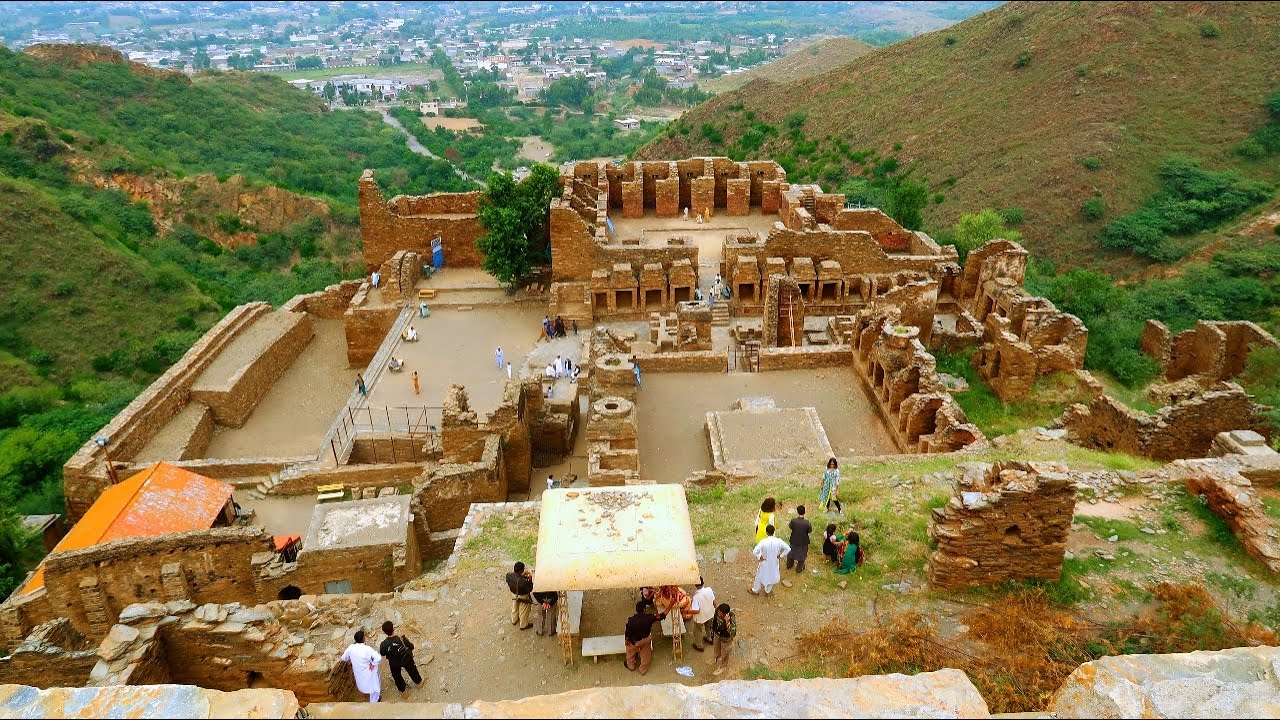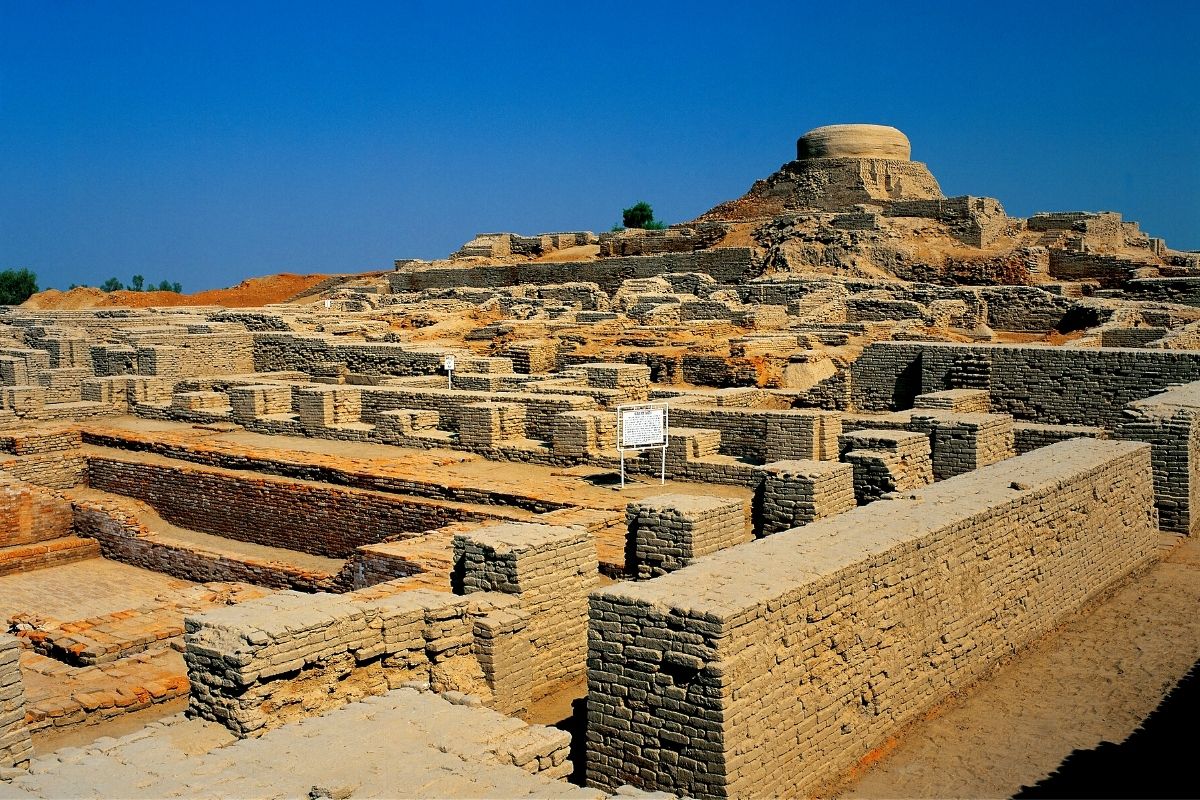In Pakistan, history whispers through the ancient walls of Lahore Fort, resonates in the poetic beauty of Shah Jahan Mosque, and stands steadfast in the archaeological wonders of Taxila. Each site is a living testament to the vibrant civilizations that thrived here, from the Indus Valley to the Mughal Empire. These cultural treasures define the nation’s identity and serve as bridges to the past.
Yet, the relentless march of climate change threatens to sever these ties. Extreme weather, rising temperatures, and unchecked urbanization are placing Pakistan’s rich heritage in peril, turning these timeless monuments into fragile relics on the brink of collapse.
Pakistan’s diverse geography, ranging from the Himalayas to the Indus Delta, offers a canvas of cultural diversity. However, it also makes the country exceptionally vulnerable to climate extremes. Monsoon floods, searing heatwaves, and desertification are not just ecological disasters—they are cultural catastrophes.

The catastrophic floods of 2022 were a grim reminder of how vulnerable Pakistan’s heritage is to water damage. Relentless rains primarily affected sites such as Thatta's Shah Jahan Mosque, renowned for its intricate tile work, and the ruins of Mohenjo-Daro. These floods washed away not just soil but also protective barriers, leaving ancient bricks and intricate mosaics exposed to further erosion.
The arid plains of Sindh and Balochistan, home to centuries-old shrines and forts, are being scorched by rising temperatures. Extreme heat accelerates the degradation of historical structures, causing cracks and weakening foundations. The once-pristine marble of Lahore’s Shalimar Gardens now suffers from discoloration and stress fractures due to these temperature fluctuations.

Rapid urbanization is another culprit. The encroachment of modern infrastructure and unchecked pollution have left historical sites gasping for breath. In Lahore, air pollution has settled like a shroud over the Badshahi Mosque and Lahore Fort, corroding the intricate stonework that has stood for centuries.

The threats to Pakistan’s heritage extend beyond individual sites. From the Buddhist monasteries of Takht-i-Bahi to the Sufi shrines of Multan, every loss is a blow to the cultural tapestry of the nation.
Each site is a custodian of stories—stories of resilience, faith, and innovation. When we lose these monuments, we lose a part of our collective memory and identity.
Recent data
Global studies reveal that South Asia is among the regions most at risk from climate change. In Pakistan, more than 40% of heritage sites are located in areas highly susceptible to extreme weather events.
- The floods of 2022 alone caused over $30 million in damage to cultural heritage.
- Temperatures in the country have risen by 0.6°C over the past century, a seemingly small figure with devastating implications for fragile historical structures.
- A UNESCO report warns that without immediate intervention, one in four heritage sites in Pakistan could face irreversible damage by 2050.
The Cultural Cost of Inaction
Pakistan’s cultural heritage is not just an aesthetic or historical asset—it’s an economic and social one. Tourism, often centered around these landmarks, contributes significantly to local economies. When a site like Taxila is damaged, it doesn’t just affect historians or archaeologists—it impacts the livelihoods of communities who depend on visitors for their income.
Moreover, heritage fosters a sense of pride and unity in a diverse nation. Losing these sites would mean losing a unifying thread in Pakistan’s complex cultural fabric.
What can be done?
Preserving heritage in the face of climate change requires innovative, collaborative approaches:
Climate-resilient conservation
Techniques must adapt to changing climates. Using weather-resistant materials for restoration and developing protective structures against floods can provide much-needed relief to vulnerable sites.
Digital archiving
The creation of digital twins for heritage sites can ensure that, even if physical structures are lost, their memory and design are preserved for future generations. Technologies like 3D scanning are already being employed worldwide and could be pivotal for Pakistan’s endangered monuments.
Community involvement
Local communities are often the first responders during disasters. Empowering them with resources and training to protect nearby heritage sites can make a significant difference.
Govt and global support
Pakistan must prioritize heritage conservation in its climate adaptation plans. Partnerships with UNESCO, the World Bank, and other international organizations can provide both expertise and funding.
As Pakistan grapples with the multifaceted challenges of climate change, it is crucial to recognize that the fight is not just for natural survival but also for cultural survival. Heritage sites are more than bricks and mortar—they are vessels of collective memory, identity, and pride.
Saving these monuments is not just a responsibility; it’s a necessity. For in preserving the past, we safeguard the soul of a nation for the generations yet to come.
Will Pakistan rise to the challenge, or will its monuments become mere echoes of a history that is incapable of enduring?



























